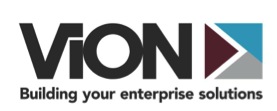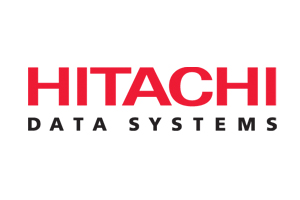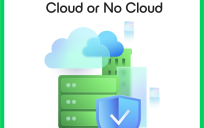This blog post is an excerpt from GovLoop’s recent guide, Forecasting the Cloud: Eight Ways the Technology is Changing Government. To download the full guide, head here.
Government agencies, more and more today, want and need the latest cloud technology. And though adoption of the cloud is becoming more of a priority, these same organizations are often challenged by tight budgets, complex procurement, and high security requirements.
Getting to the cloud doesn’t have to be hard, though — especially if you have the right industry partner. GovLoop sat down with Richard Campbell, Cloud Solutions Architect at ViON, to discuss how you can set yourself up for success with the cloud — and what risks and bumps in the road you may have to watch out for.
Campbell said that the biggest challenges the public sector faces in successful cloud adoption have to with do the following three issues: security concerns; service level agreements; and legacy application considerations.
“What we see most with our customers, especially government, is they struggle with what data to put in the cloud – and what data to not put there,” explained Campbell. “They have sensitivities and regulations they need to deal with. An example is health and patient data – how much of that can really be on a public cloud? How much needs to be on a private cloud? Is hybrid the right approach for data there? It can be a struggle to figure it out. It also can differ from agency to agency. What’s appropriate for one may not be for another.”
Service level agreements provide another obstacle for those looking to move to the cloud. Campbell explained that many of ViON’s customers are trying to put better metrics around service level agreements that focus less on potential outage time and more about the cost of doing business right.
“It’s all about what does an outage really do to a customer and how do they recoup it on the back side, not necessarily monetarily, but more in time purposes,” Campbell said. “They need to be providing consistent connectivity to their end users and this needs to be discussed in carefully considered service level agreements.”
Finally, Campbell said that legacy applications can be another significant issue for the government.
“As we see our customers start to be more open to moving to cloud, they’re starting to really get hamstrung by these legacy applications that weren’t originally able to be virtualized,” said Campbell. “So now they’re really putting a much bigger focus on virtualizing those top applications. That means we’re seeing a lot of app modernization, which really falls into the rationalization piece.
Campbell recommended that agencies ask themselves the following questions: How do I look at my applications? What are they doing? How do I modernize them? And when I modernize them, are they going be web ready and cloud enabled?
In order to navigate these myriad challenges and become truly successful in moving to the cloud, Campbell said an important tactic is to make sure to partner with the right vendor who understands the potential risks and help you navigate the process, end-to-end.
As well as the right vendor, Campbell encouraged the public sector to look more closely at the hybrid cloud option.
“Many of our customers are really starting to see the hybrid cloud approach being the best of all worlds,” Campbell noted. “It gives them much more granular control, while also preserving the capability that is easy to manage and easy to maintain and very cost effective. It helps those who are asking about the cloud, how do I look at it from just the cost perspective, and also how do I bridge in the access and availability of my applications and the data.”
A final important note of advice? Making sure you retain some control of what you’re doing with your cloud strategy with an agile and flexible cloud solution.
“ViON really wants to ensure that customers have multiple paths when it comes to cloud technology,” Campbell explained. “It’s important to be agile for a continuity of operations environment in more of a public setting, while, still putting some big security safeguards around it.”
The right cloud solution delivers flexibility, options and value, Campbell added. The flexibility is especially important.
“It’s really architecting solutions to give you multiple path resiliency,” said Campbell. “But you also need to give your applications that multipath resiliency as well.”
Added Campbell, “When you’re looking at implementing cloud, putting all your eggs in one basket might not necessarily be the best strategy. Having the ability to move or add capability with new and emerging technologies is a big piece. It’s really thinking about, how do you look at the bigger, broader architecture, versus just looking at what’s right for you right now.”
Considering the items above, said Campbell, are necessary – and helpful for anybody looking at cloud technology, no matter what stage of your implementation you are at.







Leave a Reply
You must be logged in to post a comment.